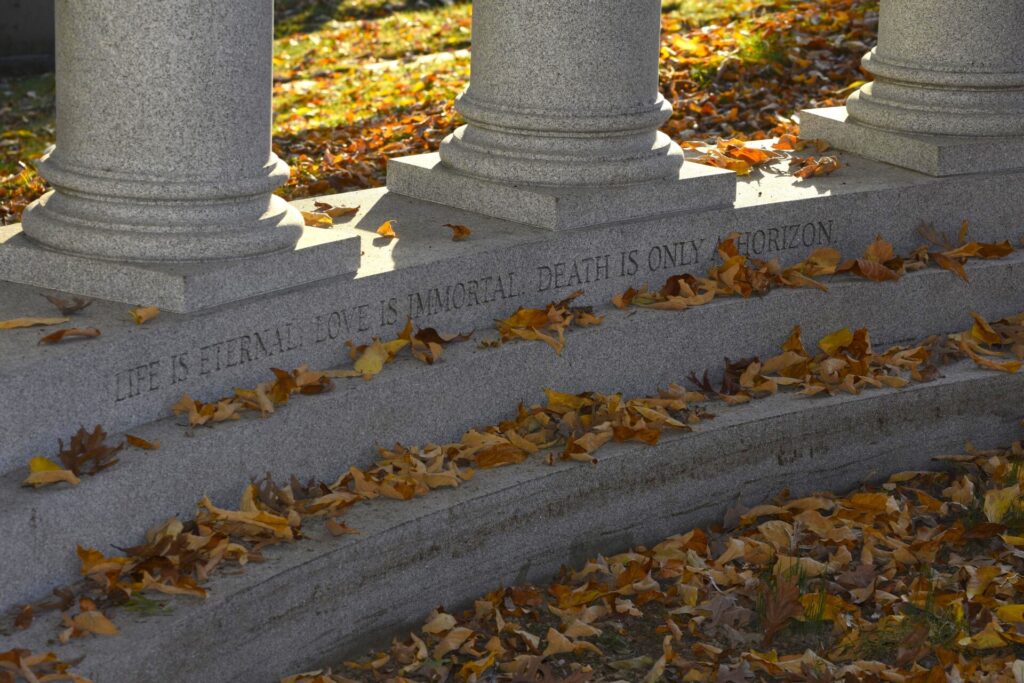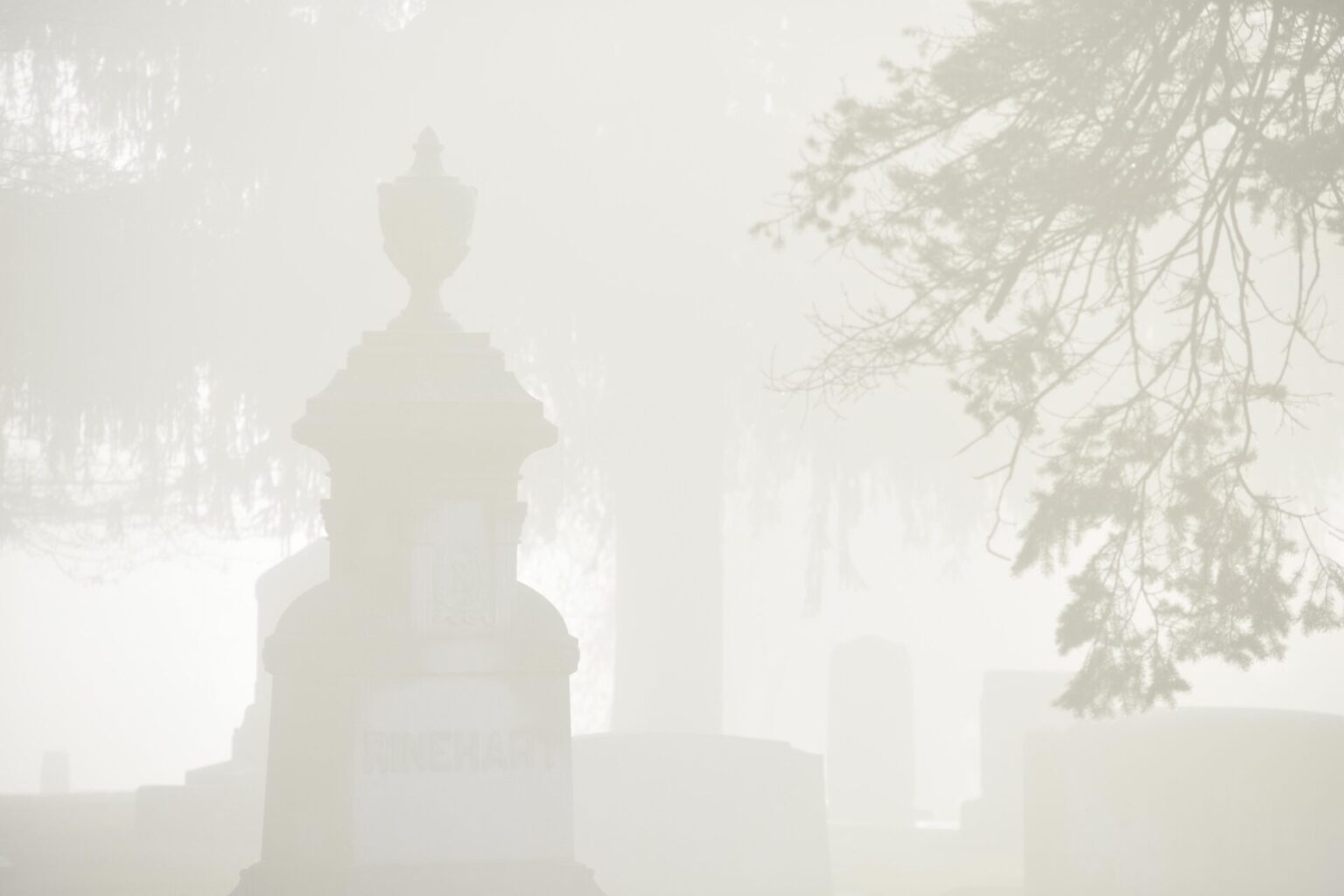Tombstones that linger atop human remains are designed to remember distinct lives. But cemetery’s above-ground sentinels belong to the living. These Monuments and memorials serve as historic markers, highlighting traditions and customs that lived during past eras. Made from granite, metal, and marble, these tombstones reflect ever-changing trends in architecture, social status, and the difficult practice of grief.
Green Hill Cemetery is a lovely 65-acre Waynesboro time capsule that celebrated its 150th anniversary in 2023. Laid out on a rolling landscape at the former Shank’s Woods, this park-like property contains over 16,000 interments. While there are thousands of stories here, several monuments command immediate visual attention when visiting this historic cemetery.
The tallest and grandest memorial is the Nicodemus monument. Standing 45-feet-tall, this pointed obelisk rises above the tree tops. The obelisk form is a fitting style. Originating from the sun worshipping symbol of ancient Egyptians, obelisks are found in many burial grounds, and this style also memorializes America’s founding father at DC’s Washington Monument.

John Nicodemus was the patriarch of this notable family, known as a king of agriculture. Nicodemus planted tens of thousands of peach and apple trees, making his fortune. When he died, John owned six farms containing over 1000 acres. Nicodemus left three thousand dollars in his will to erect a fitting personal monument at Green Hill. An angel figurine adorns the base of this massive obelisk.
Other prominent obelisks also reach skyward inside Green Hill, including the Strickler, Good and Geiser grave markers.
There is likely no greater grief than when a parent loses a child. In past eras with primitive healthcare, difficult birthing and childhood diseases claimed countless young lives. Over many years, a tradition formed to signify a child or infant’s passing. Today, both lambs and cherubs are common symbols at child gravesites, enduring symbols of innocence and spirituality.
At the Miller family plot, a winged cherub marks the grave of May Elizabeth, who perished May 7, 1870. Her parents sadly lost other children too, and May’s short life is measured out with painful exactness on her headstone (14 years, 10 months, 27 days), remembering every single day of her shortened life.

Facing the setting sun, the Russell Mausoleum sits atop a small knoll. The sturdy granite crypt holds the remains of Reverend Dr. George Russell (1824-1908) and family members, including his mother. Russell’s father abandoned his mom at an early age, thrusting the family into poverty. During his life, Russell worked tirelessly to establish wealth and social standing, and developed a widely known authoritarian personality. This trait earned Russell the nickname “King George” from his congregation.
This mausoleum is George Russell’s personal statement. “He was showing people he had made it”, said Todd Dorsett, author of the recent book, “Green Hill Cemetery; Stories of Waynesboro”. Dorsett, along with photographer Sid Miller, tell many fascinating stories of Green Hill’s permanent residents. “Russell was assertive and driven,” Dorsett recalls. Like in life, human wealth was often flaunted, and so grand tombstones and lofty monuments were utilized for post-mortem bragging rights.
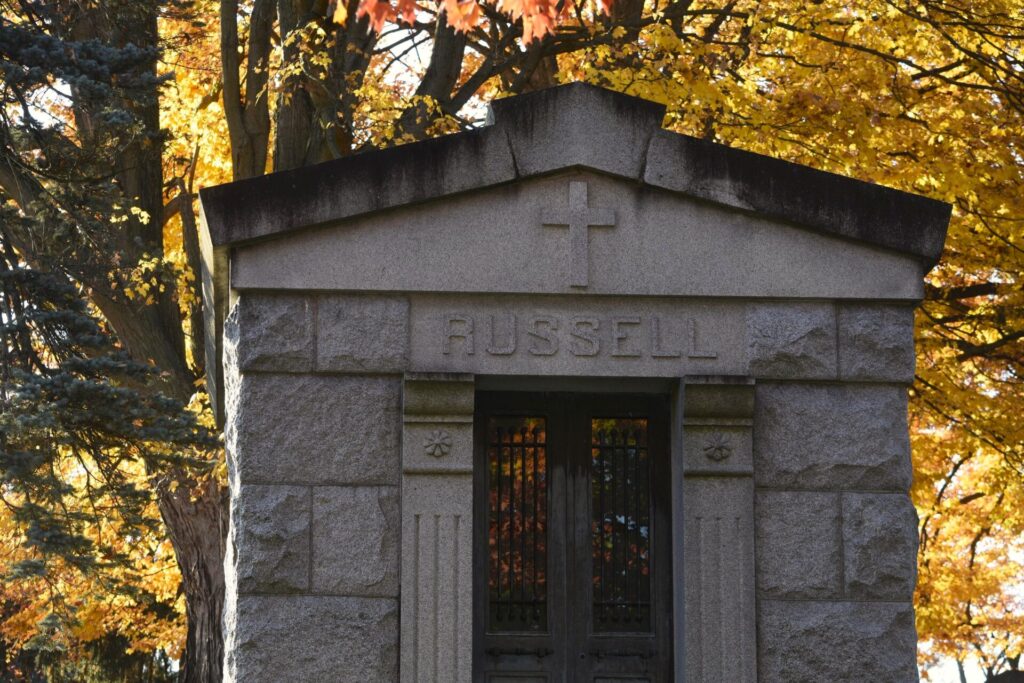
One family chose a different path when they designed their burial plot. Lewis Forney was a successful Waynesboro resident who likely possessed sufficient capital to build his own ostentatious monument. Instead, Forney picked a tombstone made from “white marble”, faux granite made from zinc. This product had the look of granite for far less money. Clasped hands on this monument symbolize a farewell with the possibility of a later meeting in eternity. Also on the Forney plot, a rustic tree motif on a nearby tombstone references the family’s ties to the natural world.
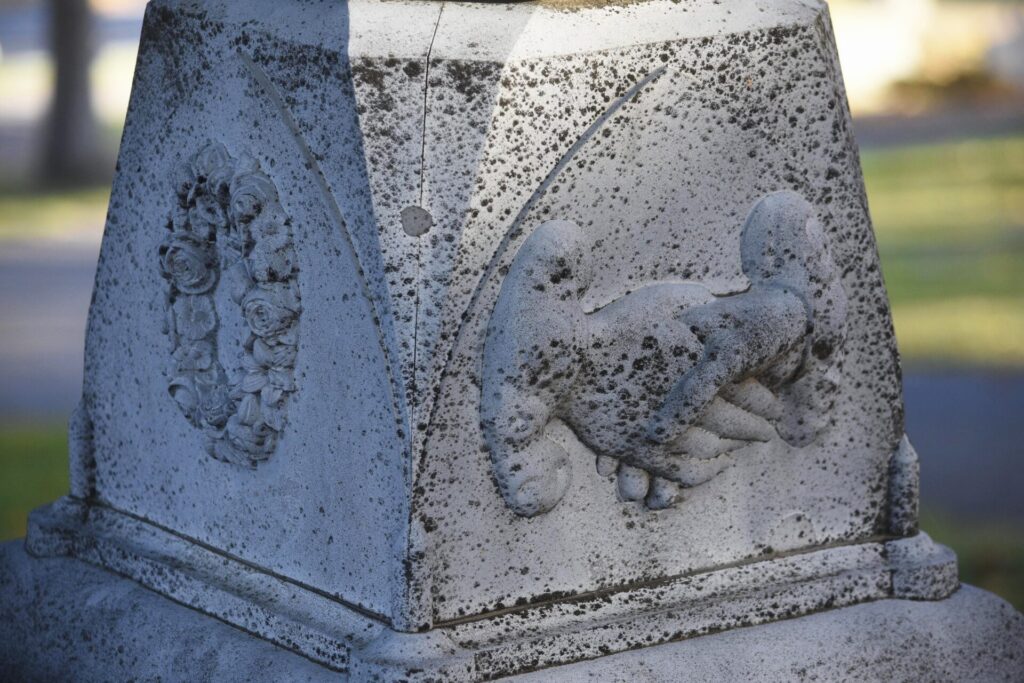
Similar to the obelisk form, many of Green Hill’s other memorials were inspired from classic forms drawn from ancient civilizations. One interesting observation is that all these stone human-like figures found inside Green Hill are feminine. When these tender monuments were built in the late 1800’s to 1920’s, the image of a Greek goddess was a popular motivation. In time, this romantic (and expensive) style would be abandoned after American society suffered through a depression and two world wars.
Among these female statues, the Hoeflich (pronounced “HAY Flee”), Lehman-Zullinger-Smith, Miner, and Neal gravesites offer four examples of this lovely form. The Neal statue is titled “A Meditation”, while the Miner figurine was recently restored to its original alabaster luster by the cemetery. Green Hill offers this renovation service to plot owners, a cleaning process that removes decades of blackening soot and other decay-causing elements.
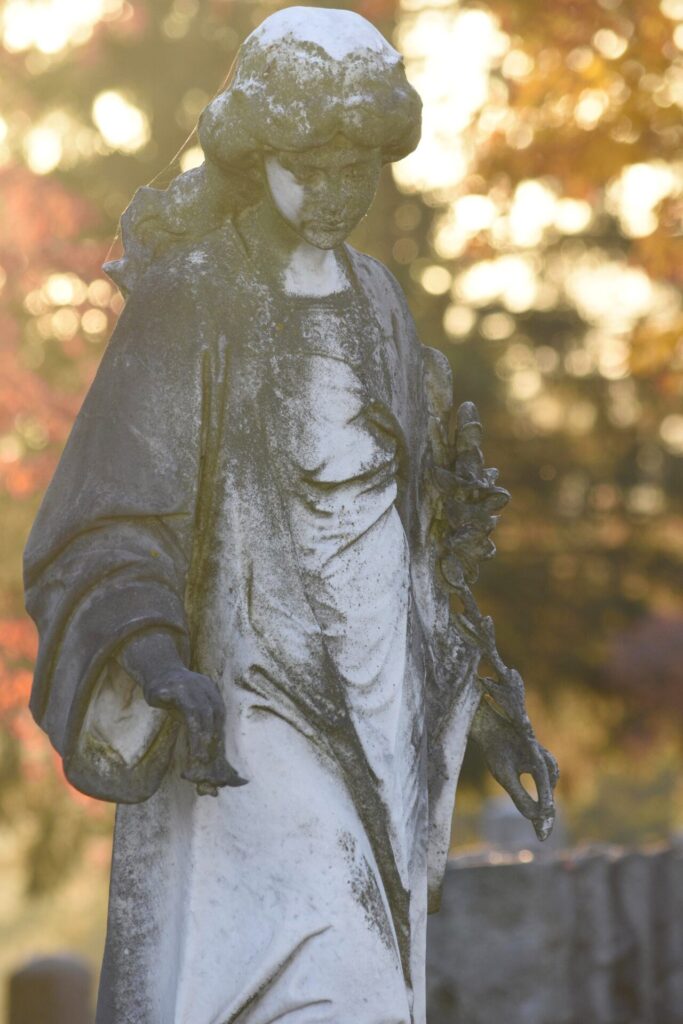


There are hundreds of tombstone details to explore at Green Hill, and various styles are reflected in different sections of the cemetery, based on the periods burials took place. One popular past variety was called Cottage Style. Instead of religious symbols (with a Christian cross being the most common), Cottage Style typically entailed a shaft or pedestal, topped by an urn, a symbol of death. The Black family monument is one such marker.
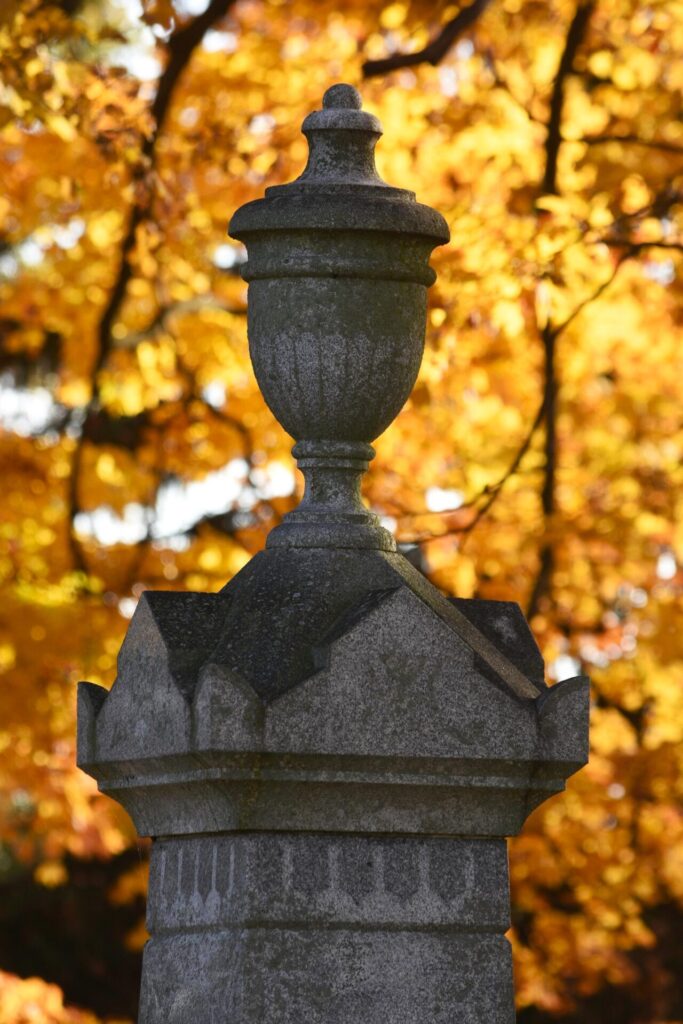
Waynesboro’s industrial heritage is also remembered at Green Hill. Industry titans Geiser, Landis, and Frick are buried there. Abraham Oppenlander (A.O.) Frick (1852-1934) has the most distinct monument over his family’s remains. Frick was the Chairman of the Board at Frick Company, with many industry patents credited to a brilliant mind. He built an opulent mansion called “Four Oaks” on Clayton Avenue that still wows today. Some have speculated this classical four-columned cemetery memorial mimics the front columns of that home. A hopeful epitaph at the base of the A.O. Frick monument reads: “Life is eternal; Love is immortal; Death is only a horizon.”
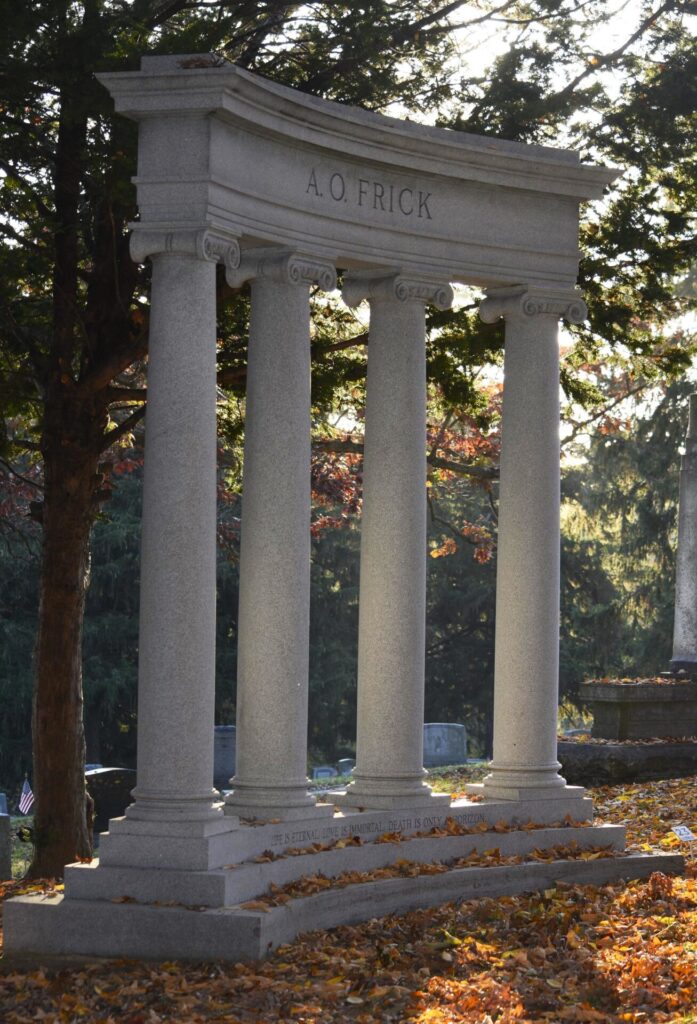
Perhaps the most memorable of Green Hill’s monuments is the Jay Funk Shank gravesite. Found on the cover of the Dorsett/Miller book, a female figure in classical garb bends over the sarcophagus in a humbling gesture of grief. The evocative tombstone was erected in 1917, nine years before Jay Shank’s demise. Jay’s wife preceded him in death in 1921. During his life, Jay Shank was industry leader, serving as Director of Geiser Manufacturing and Vice-President of Landis Machine Company.
When viewing this stirring Art-Deco-style monument in fog, the figurine seems eerily lifelike, standing despondent over the Shank’s remains.


When searching for local history, there are few places that rival Green Hill for its wealth of stories about past eras and the people who lived through them. Perhaps it’s true that “death is only a horizon”, as the A.O. Frick monument advocates. The answer to that mystery awaits us all. But these tombstones and memorials teach the living about the friends and family who have traveled beyond that mythical horizon.
This cemetery has hundreds of intriguing stories to tell. Dorsett and Miller’s 230-page “Green Hill Cemetery; Stories of Waynesboro” book, published by the Antietam Historical Association, offers these tales in greater detail.
With thanks to Todd Dorsett for providing historical information and resources about Green Hill Cemetery.
